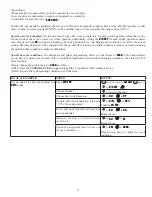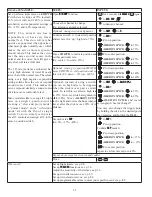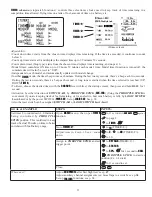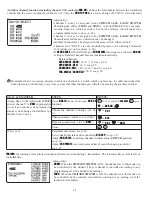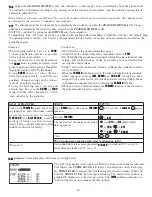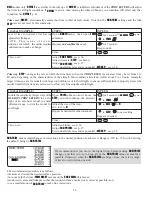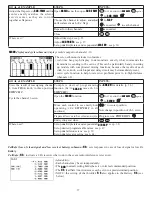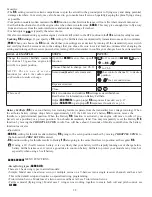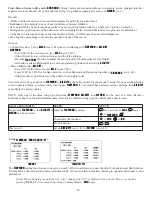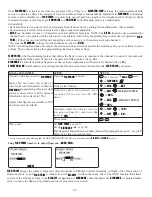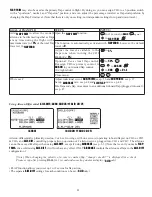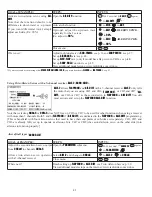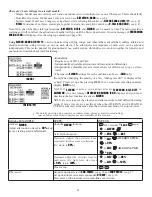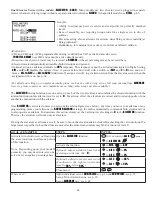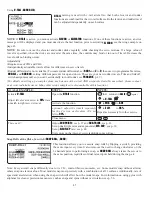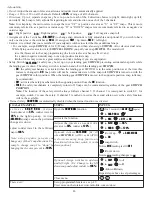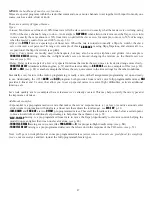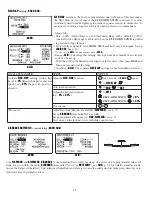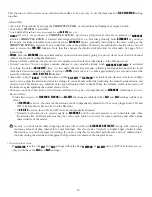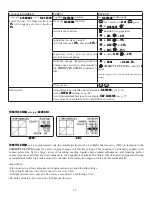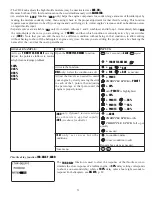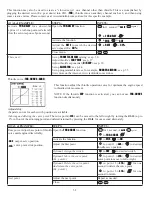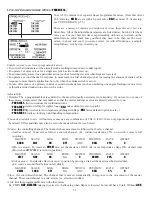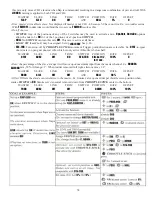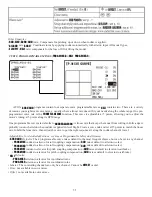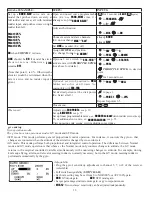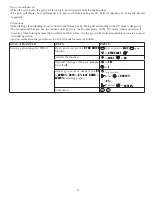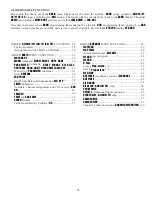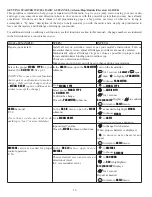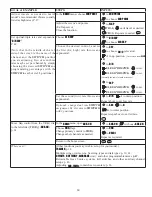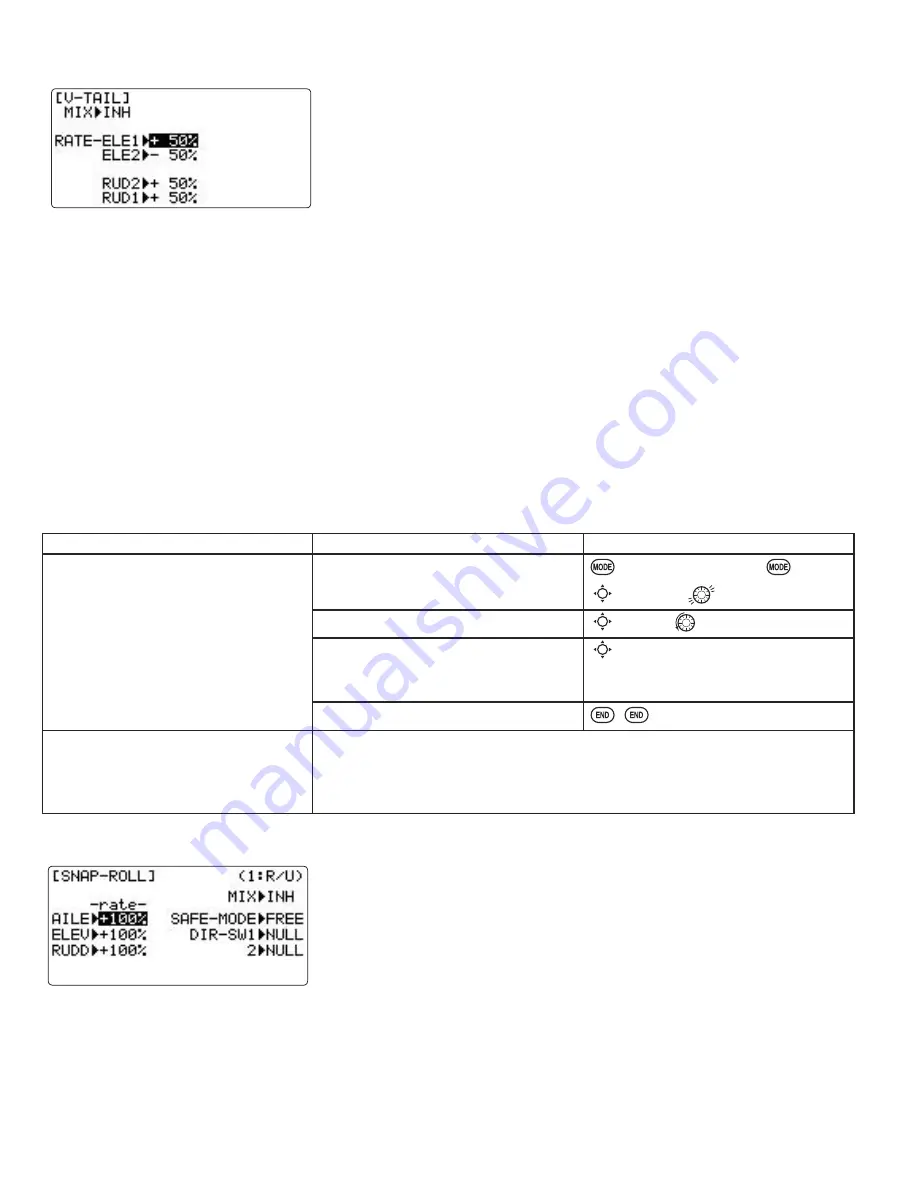
45
Using
V-TAIL
(
ACRO
GLID
):
V-TAIL
mixing is used with v-tail aircraft so that both elevator and rudder
functions are combined for the two tail surfaces. Both elevator and rudder travel
can be adjusted independently on each surface.
NOTE
: If
V-TAIL
is active, you cannot activate
ELEVON
or
AILEVATOR
functions. If one of these functions is active, an error
message will be displayed and you must deactivate the last function prior to activating
ELEVON
. see the wing example on
page 43.
NOTE
: Be sure to move the elevator and rudder sticks regularly while checking the servo motions. If a large value of
WUDYHOLVVSHFL¿HGZKHQWKHVWLFNVDUHPRYHGDWWKHVDPHWLPHWKHFRQWUROVPD\ELQGRUUXQRXWRIWUDYHO'HFUHDVHWKH
travel until no binding occurs.
Adjustability:
• Requires use of CH2 and CH4.
• Independently adjustable travels allow for differences in servo travels.
• Rudder differential is not available. (To create rudder differential, set
RUD1
and
2
to
0
, then use two programmable mixes,
RUD-ELE
and
RUD-RUD
, setting different percents for up and down. These are your new rudder travels. Trim and link off,
switch assignment null so you can’t accidentally turn off rudder. see
PROG.MIX
, p. 47.)
(For details on setting up a complex plane, such as one with a v-tail AND a separate steerable nosewheel, please
contact
us a
t www.
radiolink.com.cn
. Many other setup examples are also available at this location.)
GOAL of EXAMPLE:
STEPS:
INPUTS:
Activate
V-TAIL
.
Adjust left elevator servo to
95%
travel
to match to right servo's travel.
Open the
V-TAIL
function.
for 1 second.
(If
BASIC
,
again.)
C
to
V-TAIL
.
Activate the function.
C
to
MIX
.
to
ACT
.
optional: adjust the travels separately
for the 2 servos as elevators. (Ex: set
left to
95%
.)
C
to
ELE1
.
to
95%
.
Repeat as necessary for other servos.
Close menu.
Where next?
Adjust
END POINTs
: see p. 27 and
SUB-TRIMs
: see p. 36.
6HWXSGXDOWULSOHUDWHVDQGH[SRQHQWLDO
D/R
,
EXP
): see p. 30.
Set up
ELEV-FLAP
mix: see p. 48.
View
more
on the internet: www.
radiolink.com.cn
.
/doce/
6QDS5ROOVDWWKHÀLFNRIDVZLWFK
SNAP-ROLL
)
(
ACRO
):
7KLVIXQFWLRQDOORZV\RXWRH[HFXWHVQDSUROOVE\ÀLSSLQJDVZLWFKSURYLGLQJ
the same input every time. It also removes the need to change dual rates on the
3 channels prior to performing a snap, as
SNAP-ROLL
always takes the servos to
the same position, regardless of dual rates, inputs held during the snap, etc.
Note: Every aircraft snaps differently due to its C.G., control throws, moments, etc. Some models snap without aileron;
others snap on elevator alone. Most models snap most precisely with a combination of all 3 surfaces. Additionally, rate of
speed and acceleration when using the snap switch will affect how the model snaps. For information on using gyros with
airplanes for cleaner precision maneuvers, such as snaps and spins without over rotation, see p. 56.

